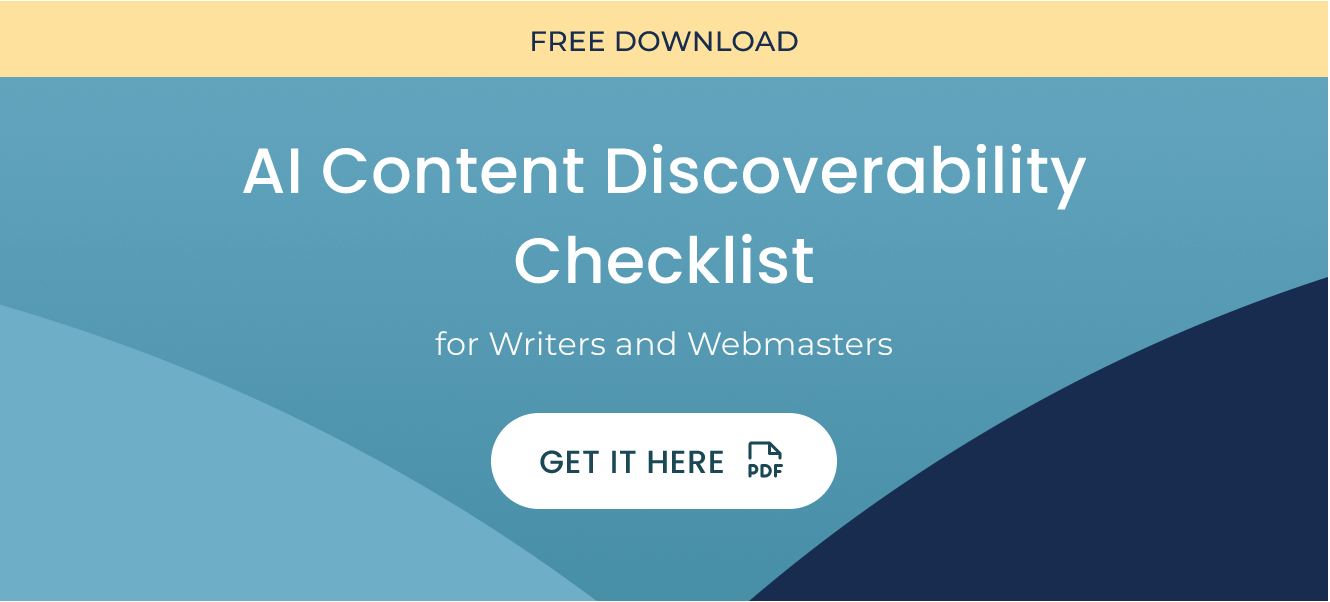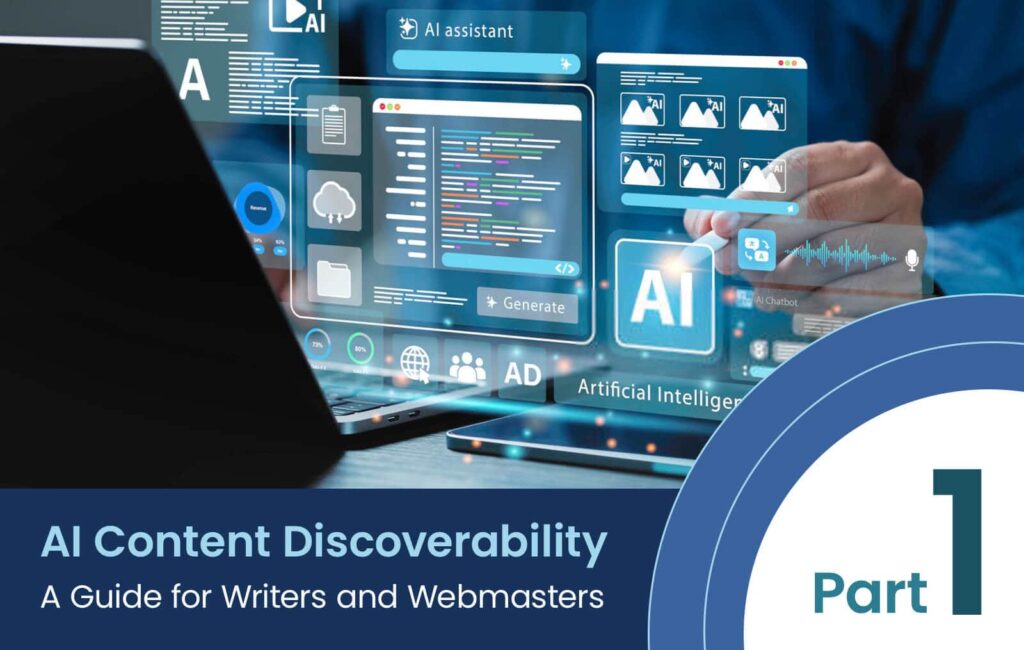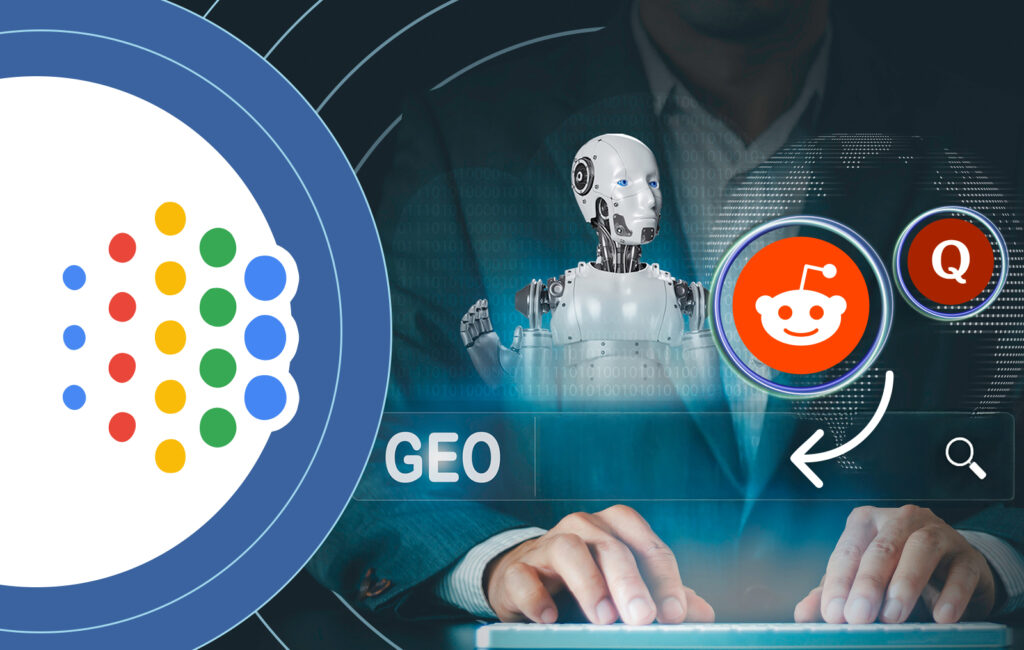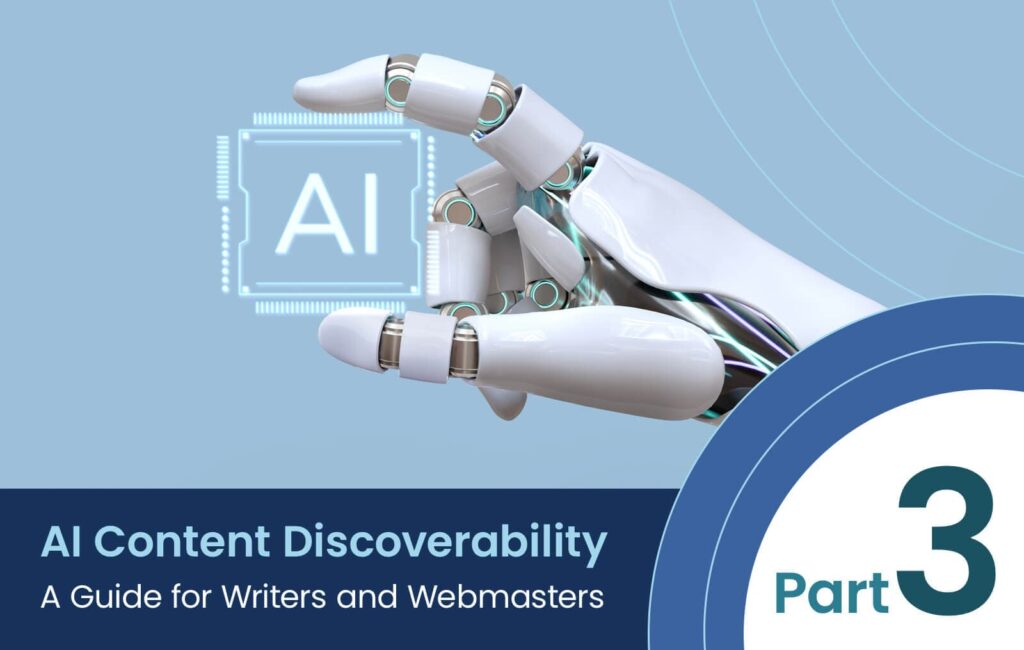Welcome to Part One of Our Three-Part Series: AI Content Discoverability – A Guide for Writers and Webmasters
In this series, we’ll explore what it takes to create and publish content that’s not just web-ready—but AI-ready. With large language models (LLMs) and generative AI engines increasingly shaping how people access and interact with online information, it’s essential to understand how these systems discover, interpret, and repurpose your content.
In Part One, we’ll examine how AI finds and uses your content. Then we’ll move on to practical strategies for optimizing your content to ensure it’s more visible and useful to AI systems. Finally, we’ll address how to monitor AI usage of your content responsibly—while staying clear of ethical and legal pitfalls.
Let’s dive in.
Table of Contents
Introduction: Why AI Discoverability Matters
1. How Generative AI Accesses Web Content
2. Overview of Corpus Construction
3. Public vs. Private Data Access
4. Patterns of AI Citation and Content Reuse
5. What Makes Content Attractive to AI?
Conclusion
Introduction: Why AI Discoverability Matters
Generative artificial intelligence is reshaping how information is accessed, interpreted, and reused. Large language models (LLMs) such as OpenAI’s GPT-4o, Google’s Gemini, Anthropic’s Claude, and Meta’s LLaMA aren’t merely tools for summarization or content generation, they’re fast becoming key intermediaries between information sources and users. These models don’t simply index content like traditional search engines, they internalize patterns, facts, and structures from large datasets to produce novel outputs based on statistical relationships.
As a result, a new form of visibility is emerging: AI discoverability. This refers to the likelihood that your content will be ingested into AI training corpora, cited in generated responses, or indirectly shape outputs through learned patterns. Unlike search engine optimization (SEO), which focuses on ranking content in dynamic query results, AI discoverability involves making content understandable, accessible, and relevant to the static and semi-static data ingestion processes used to train and update LLMs.
For writers, marketers, educators, and content strategists, improving AI discoverability means increasing the chances that your content will continue to influence how knowledge is synthesized and distributed—even when it’s no longer directly hosted on your website or cited in traditional ways. Understanding how LLMs collect and process online content is the first step in adapting to this new paradigm.
1. How Generative AI Accesses Web Content
Differences from Traditional Search Engine Crawling
Search engines such as Google and Bing use web crawlers that continuously scan, index, and rank web content in near real time. Ranking decisions are influenced by a mix of on-page SEO signals (such as keywords, meta tags, and HTML structure), off-page signals (such as backlinks and domain authority), and real-time user engagement metrics.
In contrast, LLMs are trained on static datasets that represent large snapshots of the web and other text corpora taken at specific intervals. This distinction has several important implications:
- If your content isn’t accessible, crawlable, or readable at the time of the data snapshot, it’ll likely be excluded.
- Real-time updates to your site have no effect on LLMs unless the model’s retrained or fine-tuned with new data.
- Unlike search engines, which direct traffic back to your site, LLMs may paraphrase or reproduce your content without direct attribution or links.
Moreover, while search engines operate in a retrieval-based model, most generative AI platforms use either pre-trained models (with frozen knowledge from a specific training cutoff date) or retrieval-augmented generation (RAG), which combines generative capabilities with live document retrieval from a curated index. In either case, inclusion in the training or retrieval corpus depends heavily on how your content’s structured, marked up, and made accessible.
2. Overview of Corpus Construction
Common Crawl
Common Crawl is one of the most widely used sources of web data for LLM training. It’s a non-profit initiative that performs broad web crawls approximately once per month, creating massive datasets (tens of terabytes) of HTML text and metadata. These crawls include pages from across the web but are filtered for language, accessibility, and duplication.
Curation is a key step. LLM developers often apply filters to exclude:
- Duplicate pages and low-information content (e.g., boilerplate pages, cookie banners)
- Spam and link farms
- Non-English or low-resource languages (unless explicitly included)
- Sites with explicit
robots.txtexclusions
As such, simply being online isn’t sufficient—your content’s got to be legible to crawlers, free of obfuscation, and semantically structured.
The C4 Corpus
The Colossal Clean Crawled Corpus (C4) is a cleaned version of Common Crawl data first used in Google’s T5 model and since adopted by other projects. It filters and normalizes text to remove boilerplate, ads, and noisy elements, resulting in cleaner language data. It’s primarily English-language and excludes sites that don’t permit crawling.
C4 reflects a growing trend in AI development: using large, filtered, high-quality datasets that prioritize readability and structure. For this reason, semantic clarity and consistent formatting are critical if you want your content to survive preprocessing filters.
Additional Data Sources
Other typical components of LLM training corpora include:
- Wikipedia: Widely used due to its structured format, internal consistency, and up-to-date knowledge base
- Academic and scientific datasets: Papers from arXiv, PubMed, Semantic Scholar, and open-access journals provide high-quality domain knowledge
- Books and digitized reference materials: Public domain and licensed e-books contribute to linguistic fluency and factual grounding
- Open-source platforms: GitHub, Stack Overflow, and similar platforms provide technical and procedural content
- Licensed datasets: Some companies supplement their models with proprietary datasets obtained via licensing agreements with publishers, data vendors, or governments
Training datasets can range in size from 50 billion to several trillion tokens, depending on the model’s intended use and capabilities.
3. Public vs. Private Data Access
A growing tension exists between the open nature of the web and the proprietary nature of AI development. While many LLM developers use publicly available content under fair use or similar doctrines, increasing legal scrutiny is prompting companies to rely more on licensed or curated data.
Some sites are explicitly excluded from training datasets due to:
robots.txtdirectives disallowing AI crawlers- Legal restrictions (e.g., publisher lawsuits or copyright protections)
- Commercial paywalls or login walls, which prevent automated data collection
Publishers who want their content included in AI training data need to ensure it’s both accessible and permitted for reuse under broadly acceptable terms. Conversely, those seeking exclusion can use technical or legal measures to signal opt-out status, though enforcement remains inconsistent across models.
4. Patterns of AI Citation and Content Reuse
Citation Styles in LLM Outputs
Unlike academic tools or search engines, LLMs don’t natively cite their sources. Generated responses are often synthetic in nature—reflecting patterns from the training data rather than reproducing exact text from specific documents. This leads to several kinds of reuse:
- Direct quotations: Some models may repeat short passages verbatim, especially if those passages are widely duplicated (e.g., dictionary definitions, famous phrases)
- Paraphrasing: More common is the blending of ideas from multiple documents into a new, coherent summary. This can be high-quality but may obscure the original source
- Synthetic abstraction: LLMs often generate new formulations that don’t match any single sentence in the training data but reflect underlying knowledge patterns
- Hallucination: In some cases, models produce plausible-sounding content that’s factually incorrect or untraceable
Because current-generation models weren’t primarily trained for source attribution, efforts are now underway to improve attributive transparency, either through architectural changes or retrieval-augmented techniques.
Real-World Observations
Analyses of LLM behavior have shown that certain types of content are more likely to be reproduced in outputs:
- FAQs and how-to guides: Frequently paraphrased or reproduced due to their direct, instructional tone
- Glossaries and terminology pages: Useful for training models on precise definitions
- Listicles and comparison tables: Their clear structure and semantic coherence make them easy to parse and reuse
- Topically authoritative pages: Well-linked, high-authority domains (e.g., Wikipedia, government sites) are more likely to be included and cited
By understanding these tendencies, content creators can reverse-engineer content formats that are more likely to be ingested and remembered by LLMs.
5. What Makes Content Attractive to AI?
Several content-level characteristics increase the probability that generative AI systems will use, reuse, or synthesize a given document during training or inference.
Informational Clarity
Models trained on web-scale data must generalize across a range of writing styles and domains. Content that’s written in plain, well-structured prose, with a consistent voice and minimal ambiguity, is more likely to be correctly interpreted and retained. Avoiding idiomatic expressions, redundant phrasing, and vague terminology can improve the model’s ability to recognize patterns.
Semantic and Structural Signals
HTML structure helps AI developers and preprocessing scripts identify key content segments. For example:
<h1>,<h2>, and<p>tags indicate document hierarchy<ul>,<ol>, and<li>elements help represent enumerated concepts<table>and<thead>/<tbody>tags enable relational extraction
Using semantically appropriate tags not only improves human readability but also allows automated systems to parse and extract content more precisely.
Topical Depth and Authority
LLMs often rely on heuristics such as domain authority, link structure, and lexical density to assess content quality. Pages that provide in-depth coverage of a subject—rather than superficial or aggregated content—are more likely to survive corpus filtering. Models trained on filtered versions of Common Crawl or C4 are typically biased toward comprehensive, topic-focused content.
Authoritative domains (e.g., university departments, professional associations, major publications) are also more frequently represented. Although this introduces a potential bias toward well-resourced publishers, it reinforces the importance of demonstrating domain expertise.
Consistency and Version Control
Because LLMs are trained on snapshots, temporal consistency matters. Frequent and erratic updates to key content sections (e.g., definitions, claims, statistics) may result in fragmented representations in models trained on different snapshots. Maintaining a stable canonical version of critical content (with changelogs or timestamps) can improve both ingestion and interpretation.
Conclusion
Generative AI models fundamentally differ from traditional search engines in how they access and use web content. Rather than retrieving documents dynamically, they internalize patterns and knowledge from large, curated datasets. As a result, inclusion in these datasets—and visibility in AI-generated outputs—depends on technical accessibility, semantic clarity, topical authority, and structural integrity.
Writers and webmasters who understand how LLMs source and reuse content are better positioned to produce material that not only serves human audiences but’s also useful to AI systems. In the next part of this series, we’ll examine the technical and structural optimizations needed to ensure that your content remains both visible and valuable in the age of generative AI.




